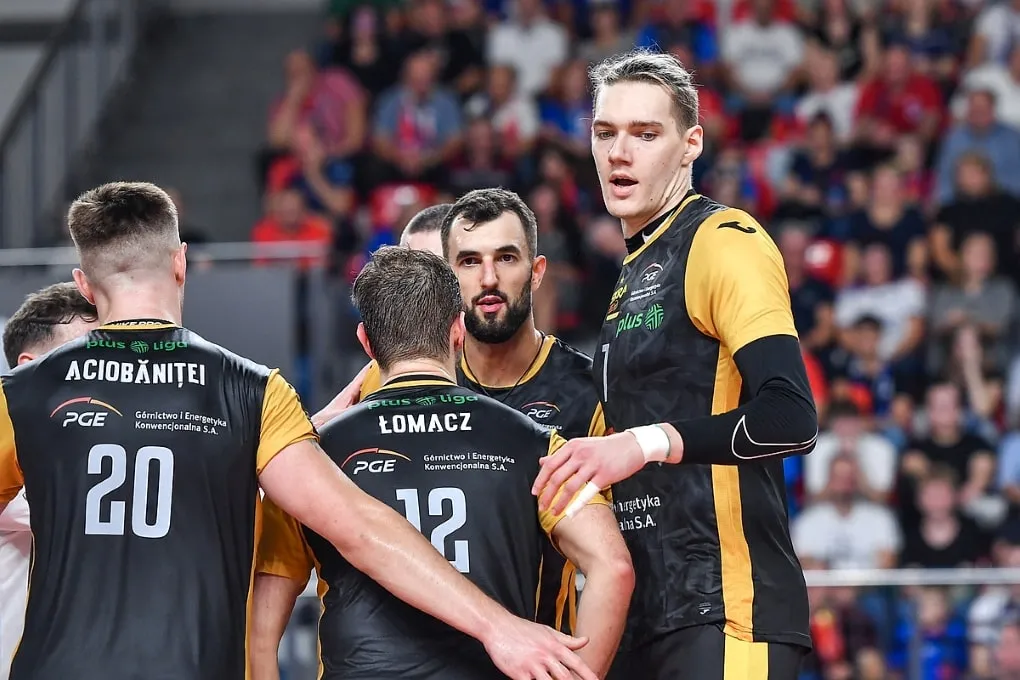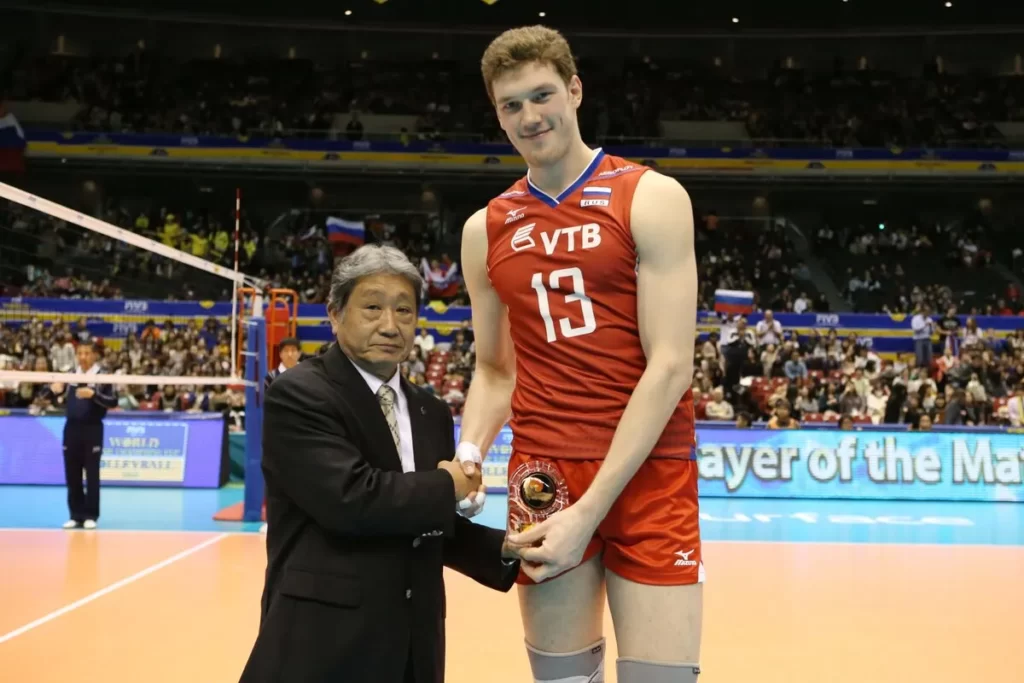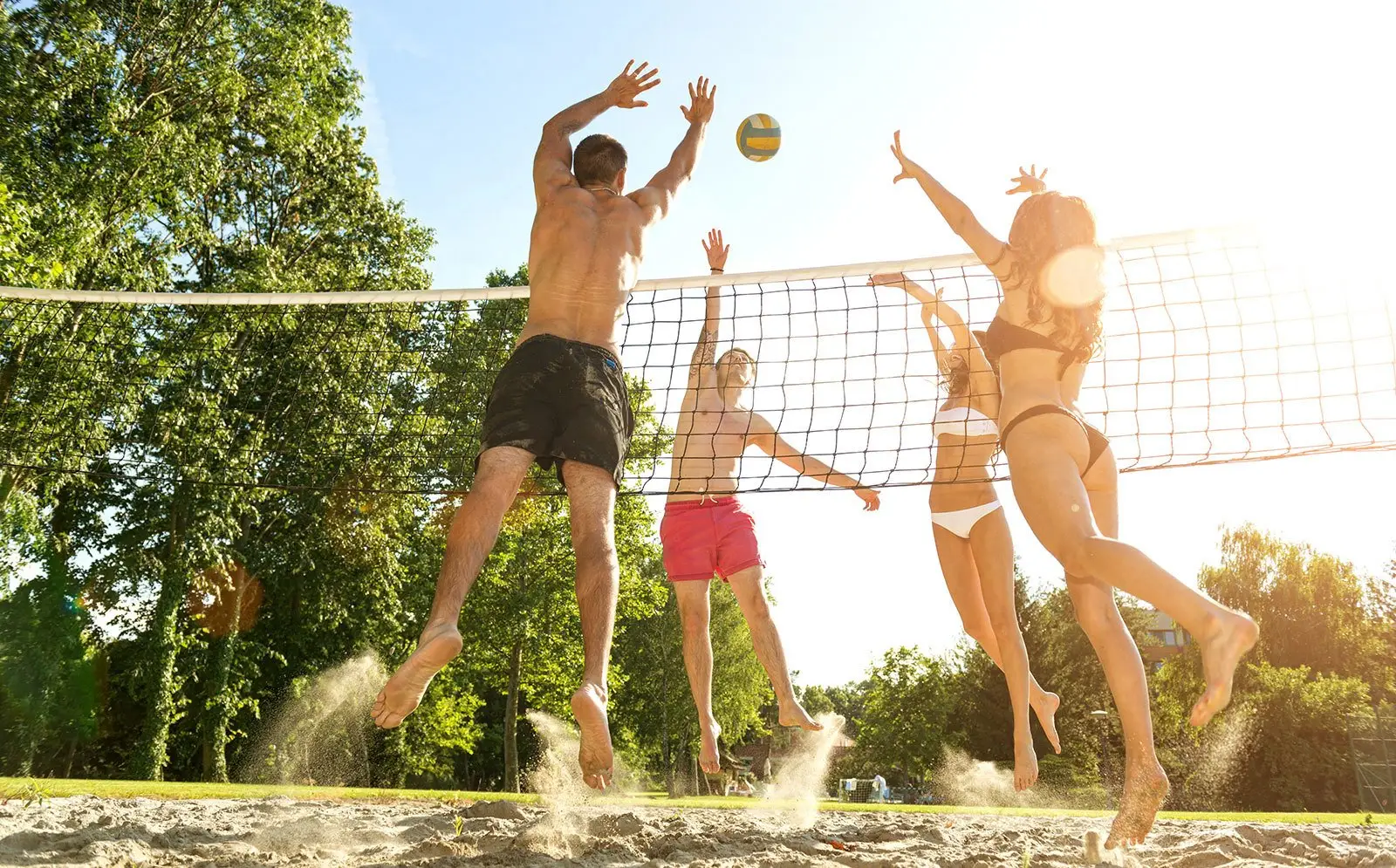In the world of volleyball, height is not just a feature, but a weapon. The tallest volleyball players tower over the rest of the field like towers, dictating the conditions and changing the nature of the game. Their presence on the court is a powerful tool that can turn the tide of a game.
Body size as a superpower
With their wingspan, they can attack, block and intimidate the opponent. When a volleyball player crosses the two-metre mark on the court, opponents can’t help but feel the pressure of that size. Players like Dmitri Musersky (218 cm) don’t just dominate the court – they turn the game into a personal confrontation with gravity.

Their height gives them a clear advantage when blocking. The higher the hands, the larger the area a player can cover, turning the opponent’s attack into a desperate attempt to overcome a wall. This is where strength comes into play – every centimetre brings an extra chance to change the outcome of the game.
Statistics confirm this truth. Studies show that the average percentage of successful blocks for team members taller than 210 cm is around 45%, while for shorter players it is around 30%. Players like Artem Volvich make blocks almost insurmountable and thus increase their team’s chances of winning.
Powerful attacks and dominance at the net
A top-down shot, where an athlete literally ‘looks’ at the ball from above, is almost impossible to defend against. The tallest volleyball players use their height to attack from a steep angle so that the opposing defenders are not sure when and where the ball will hit. Every attack executed by players like Alexander Kerzhakov (210 cm) is not just a shot, but a true demonstration of power and art.
The greatest volleyball players in Russia: records and people
 Russia has always been known for its giants on the court. Tall players like Maxim Mikhailov (202 cm) have become symbols of Russian volleyball. Russia’s tallest volleyball players not only won medals, but also changed the perception of the sport in the country. Like people from another reality, they stood out from the rest, not only physically but also mentally.
Russia has always been known for its giants on the court. Tall players like Maxim Mikhailov (202 cm) have become symbols of Russian volleyball. Russia’s tallest volleyball players not only won medals, but also changed the perception of the sport in the country. Like people from another reality, they stood out from the rest, not only physically but also mentally.
Maxim Mikhailov is known for his powerful jump and his ability to attack even from difficult positions. His height and technique earned Russia gold at the 2012 Olympic Games in London. No less impressive is Dmitry Musersky, who has become a real phenomenon not only in Russia but also on the international stage thanks to his 218 cm. His blocks and attacks are what make volleyball fans experience the best moments of the games time and time again.
Records and true stories
The history of Russian volleyball is full of records set by the greatest volleyball players. Dmitry Musersky, for example, hit the ball from a height of 374 cm at the 2014 World Championships, which was one of the highest attacking shots in the history of the sport. This is not just a number, but a real demonstration of what a tall player with years of experience and training behind him can achieve.
The impact of height on a volleyball player’s career: myths and reality
The impact of height on volleyball: an in-depth analysis
Being tall is often perceived as a clear advantage, but it’s not always that simple. It helps players to dominate at the net, but there are also hidden aspects that can hamper a career. The effects lie not only in the physical advantages, but also in the limitations.
Taller members of Russian teams, such as Ivan Yakovlev (210 cm), are exposed to greater stress on their joints, which increases the risk of injury. Many have reported knee and back problems that significantly hamper their careers. A well-known case is Artyom Volvich’s injury, which forced him to miss part of the 2018 season.
Statistics and facts
Real statistical facts:
- Tall players (over 210 cm) average 45% successful blocks in high-level games.
- In 2020, studies have shown that 70% of tall volleyball players have knee problems due to the increased strain.
- The Russian national volleyball team is on average 205 cm tall.
- Players taller than 215 cm have 30% more overhead attacks than their shorter team-mates.
Big volleyball stories: The tallest players in volleyball and NBA history
Great athletes have always been appreciated not only in volleyball, but also in basketball. The best of them have contributed to the development of both sports. The famous NBA player Shaquille O’Neal (216 cm) proved that size can work wonders in both basketball and volleyball when he took part in exhibition matches and showed off his skills at the net.
Interestingly, some volleyball players have also tried their hand in other sports leagues. Alexander Savin, the famous Soviet volleyball player (206 cm), took part in basketball training and even considered a career in basketball. This emphasises how versatile athletes can be at this level.
Where their fates converge and diverge
Top athletes, whether in volleyball or basketball, always face special challenges. The legendary basketball player Manute Bol (231 cm), for example, not only surprised people with his height, but also committed himself to charitable causes and built schools in Sudan. Tall volleyball players are also often involved in social projects and inspire young people to take up the sport, regardless of their physical abilities.

Conclusion
 The greatest volleyball players are not only part of the team, but also a symbol of their strength and determination. In Russia, this figure has always been associated with greatness and leadership. It also signifies great responsibility. Any size that allows you to dominate at the net also brings new challenges. Players like Dmitry Musersky or Maxim Mikhailov have become role models for how to use your data to get to the top and have inspired the future generation.
The greatest volleyball players are not only part of the team, but also a symbol of their strength and determination. In Russia, this figure has always been associated with greatness and leadership. It also signifies great responsibility. Any size that allows you to dominate at the net also brings new challenges. Players like Dmitry Musersky or Maxim Mikhailov have become role models for how to use your data to get to the top and have inspired the future generation.
 en
en  ru
ru  de
de  ar
ar  es
es  hi
hi  fr
fr  nl
nl  it
it  pt
pt  el
el 



